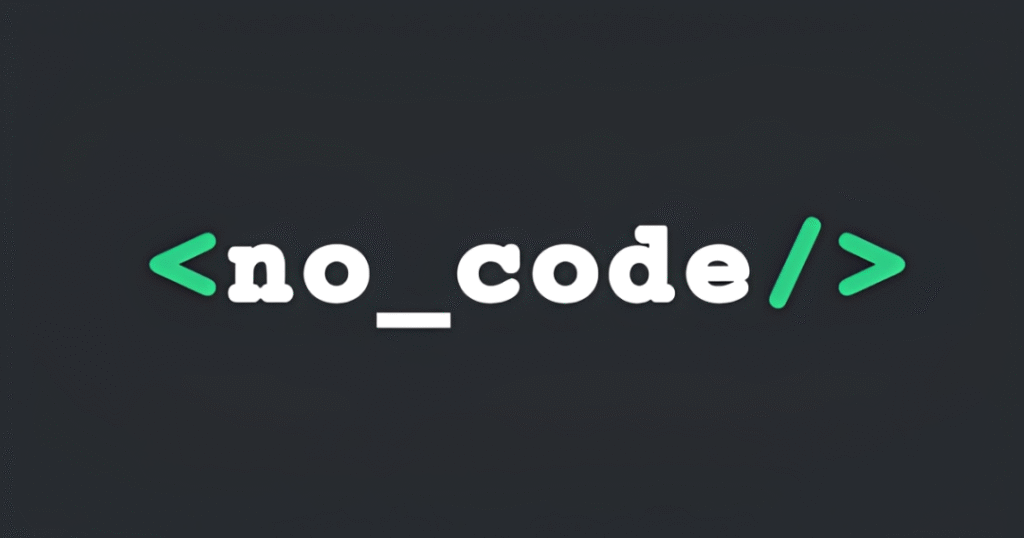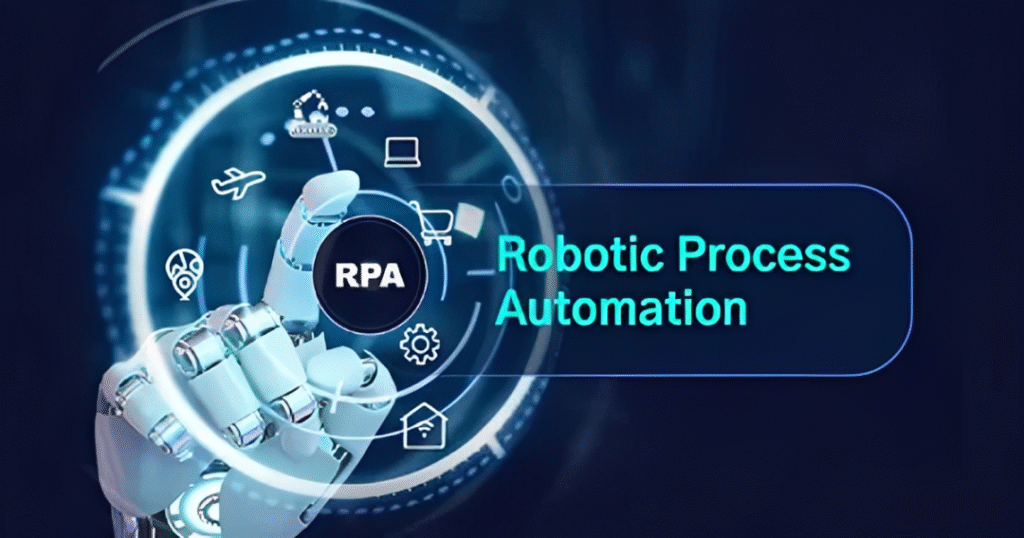The use of no-code automation tools has grown quickly in recent years. Businesses of all sizes now look for ways to save time, reduce costs, and boost productivity without needing large technical teams. In 2025, the range of platforms available has expanded even more, giving users more choice than ever. This article provides a clear comparison of no-code automation tools in 2025, showing their features, strengths, and how they fit into different business needs.
We will also look at the best no-code RPA tools and create an automation without coding guide for beginners and advanced users alike.
What Are No-Code Automation Tools?
No-code automation tools are platforms that let people create automated workflows without writing any code. They work through simple drag-and-drop interfaces, pre-built integrations, and visual editors. Instead of hiring developers, a team member with basic computer skills can build processes that connect apps, send data, and perform tasks automatically.
Why No-Code Automation Matters in 2025
Automation has moved from being an advantage to a requirement. Businesses face constant demands for faster processes, better customer service, and lower operating costs. In 2025:
- Small businesses use automation to cut down on manual work.
- Medium businesses rely on these tools to link their growing list of apps.
- Large companies use them to test, launch, and scale processes faster.
The need for accessible platforms continues to grow because not every business can afford a full IT department. This is why no code automation tools compared 2025 is a hot topic across industries.
Types of No-Code Automation Tools
Before comparing the best platforms, it helps to understand the main categories:
Workflow Automation Tools
These tools connect apps and services together. Example: sending form data to a spreadsheet, then sending a confirmation email automatically.
Robotic Process Automation (RPA) Tools
These replicate human actions, such as clicking buttons, moving files, or filling in forms on a website. In 2025, the best no code RPA tools are easier to use and more reliable than ever.
AI-Powered Automation Tools
Newer platforms use AI to add decision-making to workflows. For example, analyzing emails and deciding whether they should go to customer support, sales, or HR.
Industry-Specific Tools
Some automation tools are built for sectors like e-commerce, healthcare, or finance, focusing on tasks common in those industries.
Key Features to Look for in 2025
When comparing no-code automation tools in 2025, there are a few common features to check:
- Ease of use: Can someone with no coding skills set up workflows?
- Integrations: Does it connect with the apps your team already uses?
- Scalability: Can the platform handle growing workloads?
- AI capabilities: Does it offer intelligent suggestions or decision-making?
- Security: Does it meet the latest standards to keep data safe?
- Cost: Are there flexible pricing options for different team sizes?
No-Code Automation Tools Compared 2025
Below is a breakdown of the most popular tools available today.
Zapier
- Overview: Still one of the most popular platforms, Zapier connects thousands of apps.
- Strengths: Simple setup, wide range of integrations, good for small and mid-sized teams.
- Weaknesses: Can get expensive at scale.
Make (formerly Integromat)
- Overview: Known for advanced workflows and visual design.
- Strengths: Great for complex scenarios, supports detailed data transformations.
- Weaknesses: Learning curve may be higher for beginners.
n8n
- Overview: Open-source automation tool with strong flexibility.
- Strengths: Self-hosting option, strong community, low cost if managed internally.
- Weaknesses: Requires some technical setup, not as beginner-friendly.
UiPath StudioX
- Overview: Part of UiPath’s RPA suite, designed for non-developers.
- Strengths: Strong RPA features, enterprise-level capabilities.
- Weaknesses: More expensive than smaller tools.
Microsoft Power Automate
- Overview: Integrates with Microsoft 365 and other business apps.
- Strengths: Good for companies already in the Microsoft ecosystem.
- Weaknesses: Limited outside Microsoft apps compared to Zapier.
Airtable Automations
- Overview: Combines database power with automation.
- Strengths: Great for teams that manage structured data.
- Weaknesses: Limited integrations compared to dedicated platforms.
Notion Automations (new for 2025)
- Overview: In 2025, Notion has expanded its automation features.
- Strengths: Seamless for teams already using Notion.
- Weaknesses: Still early compared to established tools.
Best No Code RPA Tools for 2025
While workflow tools are popular, RPA platforms play a special role. The best no code RPA tools in 2025 include:
- UiPath StudioX: Strong enterprise RPA for non-coders.
- Automation Anywhere A360: Cloud-native RPA with easy interfaces.
- ElectroNeek: Designed for MSPs (managed service providers) with no-code setups.
- WorkFusion: Combines RPA with AI for smart process automation.
These tools are especially useful for companies that need to automate repetitive computer-based work such as filling forms, processing invoices, or updating CRM systems.
Automation Without Coding Guide
For beginners who want to start automation in 2025, here’s a short automation without coding guide:
Step 1: Identify Repetitive Tasks
List the tasks your team spends the most time on, such as data entry, file movement, or email responses.
Step 2: Choose the Right Tool
Pick a platform based on your needs:
- Zapier for simple app connections.
- UiPath or Automation Anywhere for full RPA.
- Make or n8n for complex workflows.
Step 3: Start Small
Automate a single workflow first. Example: New form submission → Add to Google Sheet → Send welcome email.
Step 4: Test and Adjust
Run the automation, monitor results, and fix errors.
Step 5: Scale
Add more workflows once the basics are working well.
Trends in No-Code Automation for 2025
The market in 2025 shows a few clear trends:
- AI-driven automation is becoming standard, with tools learning from past tasks.
- Cross-platform integrations are expanding, meaning fewer “gaps” between apps.
- Industry-specific automation tools are rising, focused on healthcare, e-commerce, and education.
- More affordable pricing options are appearing, making automation accessible to freelancers and small startups.
Benefits of Using No-Code Automation
- Saves time and cuts down manual tasks.
- Reduces human error.
- Increases productivity without adding staff.
- Makes businesses more flexible and responsive.
- Allows teams without coding skills to be independent.
Challenges of No-Code Automation
Even with benefits, challenges remain:
- Limited customization compared to custom-coded solutions.
- Dependency on third-party platforms.
- Pricing can rise with higher usage.
- Security concerns when dealing with sensitive data.
Which Tool Is Right for You in 2025?
Choosing the right automation tool depends on:
- Business size: Small businesses may prefer Zapier or Make, while large enterprises may go with UiPath.
- Budget: Open-source options like n8n reduce costs but may need setup help.
- Use case: Database-heavy teams might pick Airtable Automations, while Microsoft users benefit from Power Automate.
Read More Informational And Interesting Blogs Visit Our Website Lidarmos
Conclusion
In 2025, no-code automation tools have become essential for businesses of all sizes. From simple workflows to advanced RPA, the range of options is wider than ever. Companies that choose wisely can cut costs, improve productivity, and stay competitive without needing coding skills.
When looking at no code automation tools compared 2025, the key is to start with your goals, test a platform that fits, and grow from there. Whether you’re exploring the best no code RPA tools or need an automation without coding guide, the opportunities in 2025 are stronger than any year before.

